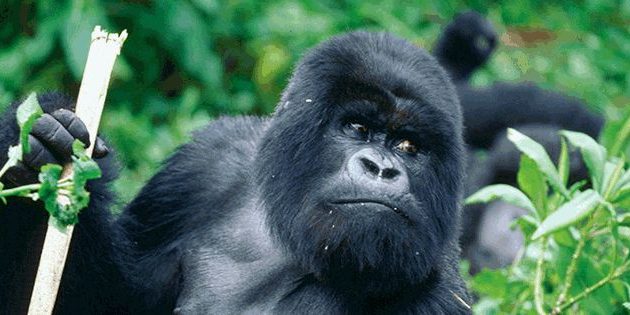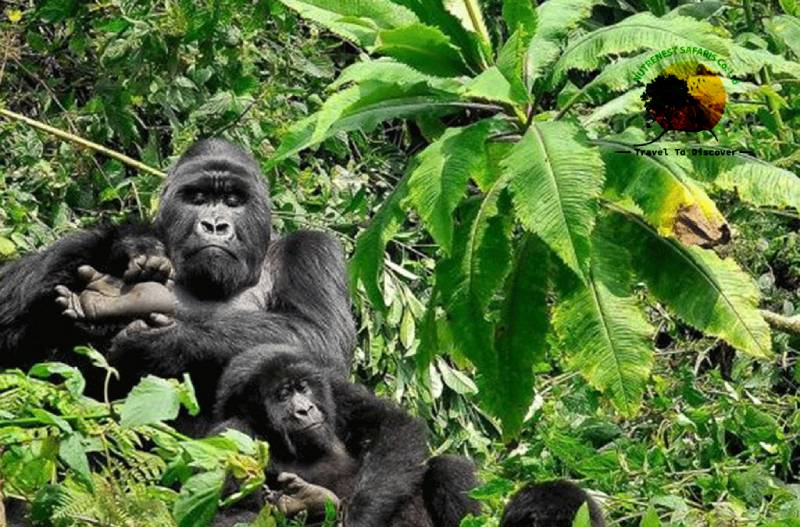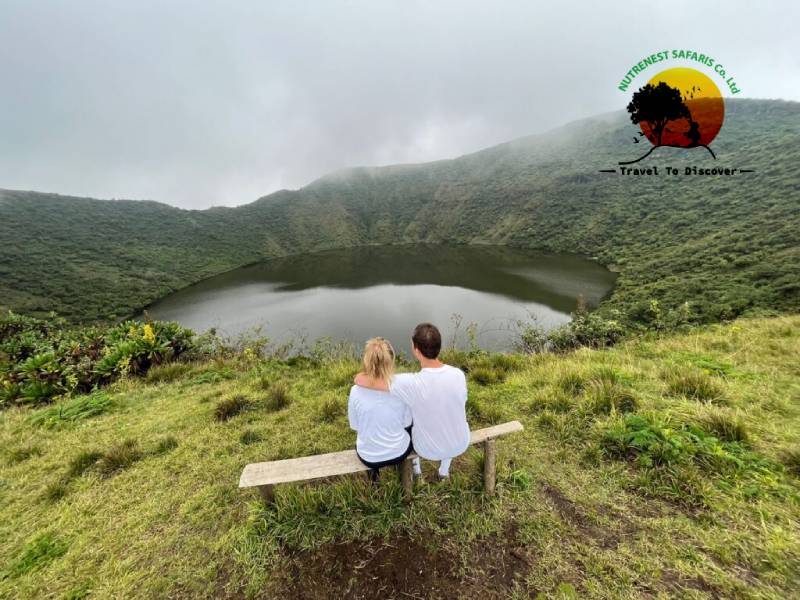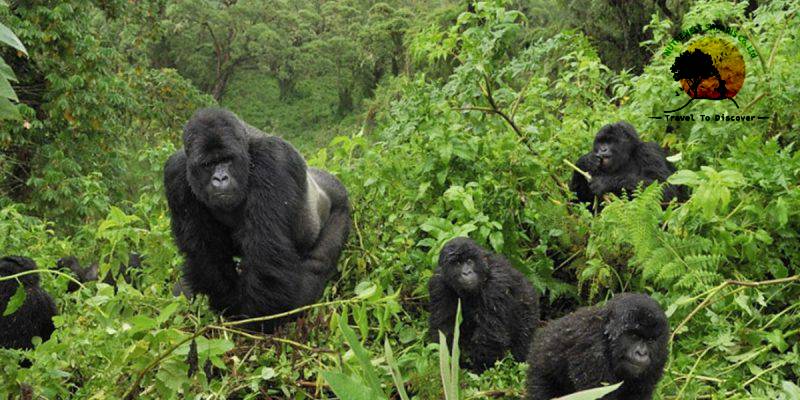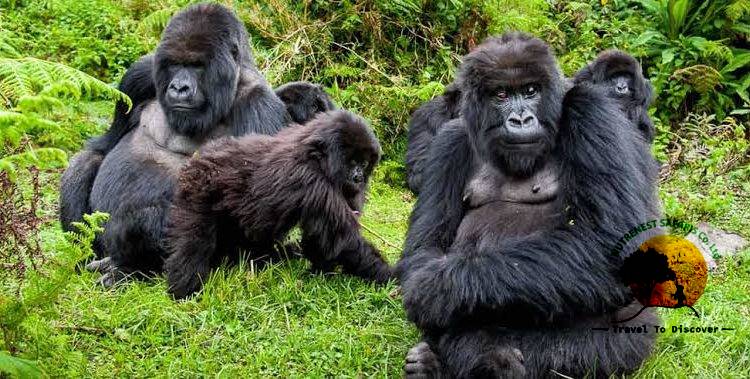Gorilla trekking and gorilla habituation experiences offer unique and awe-inspiring ways to encounter one of nature’s most magnificent creatures—the mountain gorilla. Both activities provide an unparalleled opportunity to observe these gentle giants in their natural habitat, yet each offers a distinct experience that caters to different preferences and expectations. In this comprehensive guide, we will delve into the differences and similarities between gorilla trekking and gorilla habituation, and explore why each might be the perfect adventure for you.
Understanding Gorilla Trekking
Gorilla trekking involves guided hikes into the dense forests of Uganda, Rwanda, and the Democratic Republic of Congo, where participants get to spend a precious hour with a habituated gorilla family. These families have been accustomed to human presence over years, making them more approachable for visitors.
Gorilla Trekking in Bwindi Impenetrable Forest
The Bwindi Impenetrable Forest in Uganda is one of the most famous destinations for gorilla trekking. This UNESCO World Heritage site is home to nearly half of the world’s remaining mountain gorillas, making it a prime location for Gorilla Tracking Bwindi. The trek through Bwindi’s lush, mountainous terrain can be challenging, but the reward of encountering a gorilla family in their natural habitat is unmatched.
Gorilla Trekking Safari in Rwanda
Rwanda, known as the “Land of a Thousand Hills,” offers another incredible gorilla trekking experience in Volcanoes National Park. A Gorilla Trekking Safari Rwanda provides not only the chance to see gorillas but also to experience the country’s stunning landscapes and vibrant culture. Rwanda has invested significantly in conservation and tourism, ensuring that your trek is not only memorable but also contributes to the preservation of these magnificent animals.
The Gorilla Trekking Adventure
A typical gorilla trekking adventure begins early in the morning with a briefing from park rangers. Trekkers are divided into groups, each led by a guide, and embark on a journey through the forest. The trek can last anywhere from a couple of hours to a full day, depending on the location of the gorillas. Once the gorillas are located, visitors spend a magical hour observing their behavior, taking photographs, and marveling at their close-knit family dynamics.
The Gorilla Habituation Experience
Gorilla habituation goes a step beyond trekking by allowing participants to spend up to four hours with a gorilla family that is still in the process of becoming accustomed to human presence. This experience provides a deeper insight into the lives of gorillas and the efforts involved in their conservation.
What to Expect from Gorilla Habituation
Gorilla habituation is a more immersive and educational experience compared to traditional trekking. Participants accompany researchers and rangers as they follow a gorilla group, observing and documenting their behaviors and interactions. This extended time allows for a more intimate and comprehensive understanding of gorilla life.
Locations for Gorilla Habituation
Currently, gorilla habituation experiences are primarily offered in Uganda’s Bwindi Impenetrable Forest. This program is limited to a few visitors each day to minimize disturbance and ensure a meaningful experience for both the gorillas and participants.
The Benefits of Gorilla Habituation
• Extended Time with Gorillas: With up to four hours spent with the gorillas, habituation offers a deeper, more relaxed encounter.
• Educational Insight: The presence of researchers provides valuable knowledge about gorilla behavior, conservation efforts, and the challenges they face.
• Unique Experience: As the gorillas are not fully habituated, their reactions to humans can be more varied and authentic, offering a rare glimpse into their natural responses.
Key Differences Between Gorilla Trekking and Gorilla Habituation
Duration of Interaction
• Gorilla Trekking: Visitors spend one hour with a habituated gorilla family.
• Gorilla Habituation: Participants spend up to four hours with a family undergoing habituation.
Level of Interaction
• Gorilla Trekking: Offers a more structured experience with a focus on observing gorillas in a limited time frame.
• Gorilla Habituation: Provides a more flexible and immersive experience, with opportunities to observe and learn from ongoing research activities.
Physical Demands
• Gorilla Trekking: Generally involves a shorter trek, making it suitable for a wide range of fitness levels.
• Gorilla Habituation: May require longer and more strenuous hikes, appealing to those seeking a more physically demanding adventure.
Cost and Availability
• Gorilla Trekking: Typically more widely available and less expensive than habituation permits.
• Gorilla Habituation: Limited availability and higher cost due to the extended duration and exclusive nature of the experience.
Choosing the Right Experience for You
Consider Your Interests
If you are passionate about wildlife conservation and eager to gain a deeper understanding of gorilla behavior, the gorilla habituation experience may be the perfect choice. This option provides more time to observe and learn from researchers, offering a richer educational experience.
On the other hand, if you are looking for a thrilling adventure that fits within a tighter schedule, gorilla trekking
offers an incredible opportunity to see these majestic animals in their natural environment, without the need for a full-day commitment.
Assess Your Fitness Level
Both gorilla trekking and habituation can be physically demanding, but habituation typically requires more stamina due to the extended time spent in the forest. Ensure you are prepared for the physical challenges by considering your fitness level and consulting with tour operators about the difficulty of the trek.
Budget Considerations
Gorilla trekking permits are generally more affordable and easier to obtain than habituation permits. If budget is a significant factor, traditional gorilla trekking may be the more accessible option. However, the unique experience of gorilla habituation can justify the higher cost for those seeking a more in-depth encounter.
Conservation and Ethical Considerations
Both gorilla trekking and habituation experiences play crucial roles in the conservation of mountain gorillas. The fees from permits fund conservation efforts, anti-poaching patrols, and community development projects, ensuring that local communities benefit from tourism and support the protection of gorillas.
Responsible Tourism
When participating in either gorilla trekking or habituation, it is essential to follow guidelines set by conservation authorities. This includes maintaining a safe distance from the gorillas, avoiding flash photography, and not visiting if you are ill, to prevent the transmission of diseases to the gorillas.
Supporting Local Communities
Both experiences provide employment opportunities for local guides, trackers, and porters, contributing to the local economy. Choosing reputable tour operators who prioritize sustainable practices ensures that your visit has a positive impact on both the environment and the community.
Conclusion: Making the Choice
Whether you choose gorilla trekking or a gorilla habituation experience, you are in for an unforgettable adventure. Each offers unique benefits and challenges, but both provide a rare opportunity to connect with one of the world’s most endangered species.
For those seeking a quick, thrilling encounter, a Gorilla Trekking Safari in Rwanda or Gorilla Tracking in Bwindi will provide an exhilarating and memorable experience. If you prefer a more immersive, educational journey, the gorilla habituation experience in Bwindi is an exceptional choice that offers deeper insights and longer interaction with these incredible animals.
Ultimately, the decision comes down to your personal preferences, fitness level, budget, and interest in wildlife conservation. Regardless of your choice, encountering mountain gorillas in their natural habitat is a profound experience that will leave a lasting impression and a greater appreciation for the importance of protecting these majestic creatures. Embark on your gorilla trekking adventure today and become part of the global effort to conserve these remarkable animals for future generations.
